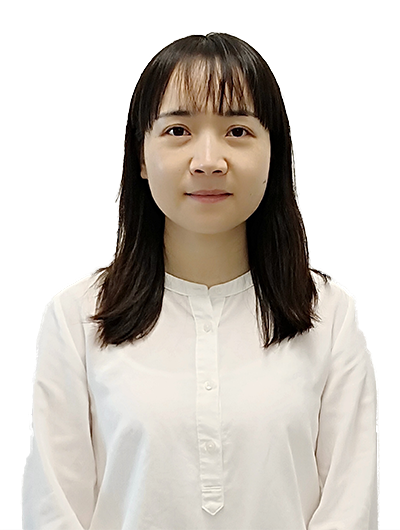
Jiang, Xian
蒋显
Institute of Neurological and Psychiatric Disorders
Junior Principal Investigator
jiangxian@szbl.ac.cn
Home page of research group:http://www.jiangxianlab.com/
Timeline
-
2022 - Present
Peking University Shenzhen Graduate School Tenure-track Assistant Professor (joint appointment)
-
2021 - Present
Shenzhen Bay Laboratory Junior Principal Investigator
-
2021. 02 - 2021.11
Stanford University & HHMI Research Specialist
-
2017.02 - 2021.02
Stanford University & HHMI Postdoctoral Fellow
-
2014.08 - 2017.02
National Institute of Biological Sciences, Beijing Postdoctoral Fellow
-
2009 - 2014
National Institute of Biological Sciences, Beijing &Tsinghua University, PhD
-
2005 - 2009
Beijing Normal University B.S.
Research Areas
Our lab investigates 1)the molecular mechanisms of memory storage, including the function of neurons and glia cells; 2) the intracellular signaling pathways of synapse formation, using techniques such as single cell RNA sequencing, genetic tools, imaging, electrophysiology, cell and molecular biology and animal behavior, etc.
Highlights
Dr. Jiang obtained her bachelor’s degree in Beijing Normal University and was mentored by Dr. Xiaodong Wang at National Institute of Biological Sciences, Beijing during her PhD training, studying the molecular mechanisms of mitochondrial apoptosis. During her PhD training, Dr. Jiang identified the key steps which control the mitochondrial release of cytochrome c and developed small molecule inhibitors for mitochondrial apoptosis, which offered new insight for the treatment of neurodegenerative diseases. Dr. Jiang performed her postdoctoral studies in Dr. Thomas Sudhof lab at Stanford University, HHMI, investigating the molecular and cellular mechanisms of memory storage and the intracellular mechanisms of synapse formation with the aid of single cell RNA sequencing, imaging, animal behavior, and cultured neuron system and techniques. Her research revealed the persistent gene expression changes associated with remote memory in both neurons and glia cells in mPFC, and identified the important signaling pathways, including JNK, PKA, and PI3K, that control synapse formation. Additionally, Dr. Jiang elucidated the molecular mechanisms of synapse formation mediated by the synaptic adhesion molecules such as Teneurin, Latrophilin.
Dr. Jiang has published research articles in world top journals such as Nature, Cell, Science, Mol Cell, PNAS, etc, including 4 first author papers. Dr. Jiang was also authorized with 1 patent, which is under translation.
Honors
• 2012 NIBS Outstanding Graduate Student
• 2009 BNU Outstanding Graduate; Beijing Outstanding Graduate; Beijing Merit Student
• 2008 National Scholarship; First Prize of Jingshi Cup technology contest;First Grade scholarship; Merit student of BNU
• 2007 National Motivation Scholarship; Second grade scholarship; Merit student of BNU;
• 2006 First grade scholarship; Outstanding worker of BNU Broadcasting Station
• 2005 Hunan Merit Student
Selected Publications
1. Jiang X, Sando R, and Südhof TC. Multiple signaling pathways are essential for synapse formation induced by synaptic adhesion molecules. Proc Natl Acad Sci U S A. January 19, 2021 118 (3) e2000173118; doi.org/10.1073/pnas.2000173118.
2. Chen MB*, Jiang X*, Quake SR#, and Südhof TC#. Persistent transcriptional programs are associated with remote memory. Nature, 2020, 587:437-442. *these authors contribute equally #co-corresponding author. doi:10.1038/s41586-020-2905-5.
3. Sando R, Jiang X, and Südhof TC. Latrophilin GPCRs direct synapse specificity by coincident binding of FLRTs and teneurins. Science 2019, 363(6429). doi:10.1126/science.aav7969
4. Jiang X, Li L, Ying Z, Pan C, Huang S, Li L, Dai M, Yan B, Li M, Jiang H, Chen S, Zhang Z, and Wang X. A Small Molecule That Protects the Integrity of the Electron Transfer Chain Blocks the Mitochondrial Apoptotic Pathway. Mol Cell 2016, 63: 229-239. (Cover Story) doi:10.1016/j.molcel.2016.06.016
5.Jiang X, Jiang H, Shen Z, and Wang X. Activation of mitochondrial protease OMA1 by Bax and Bak promotes cytochrome c release during apoptosis. Proc Natl Acad Sci U S A. 2014, 111(41):14782-7. doi:10.1073/pnas.1417253111












